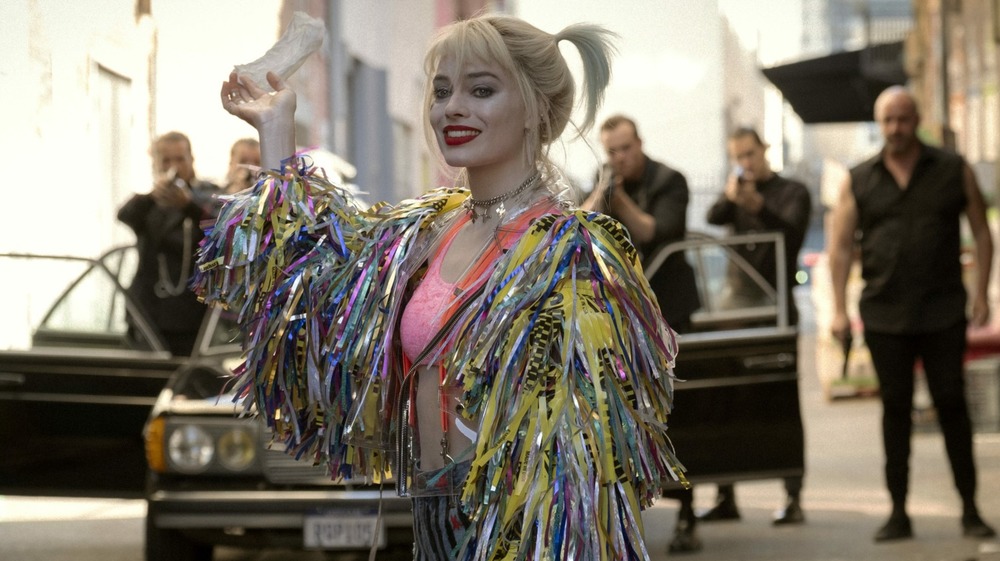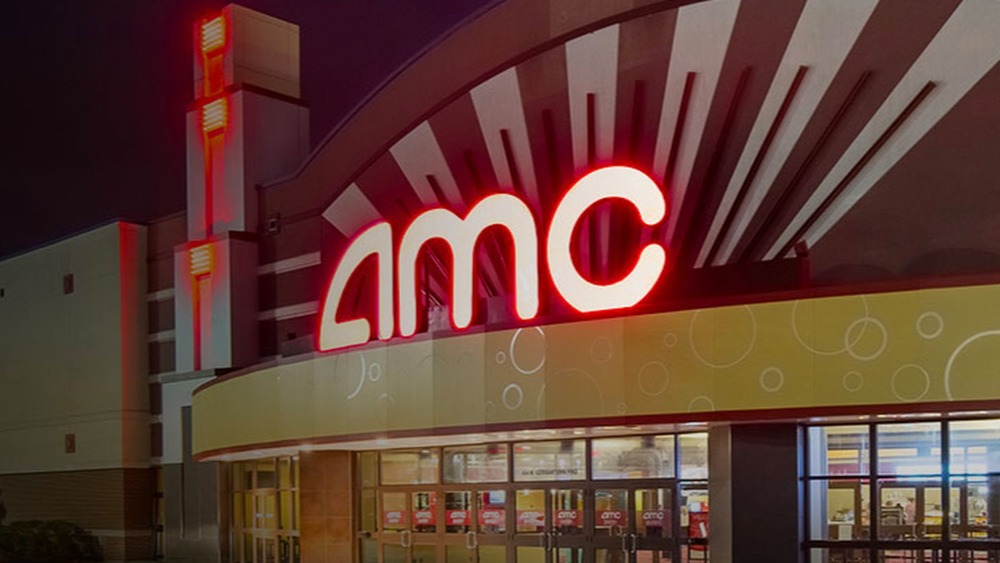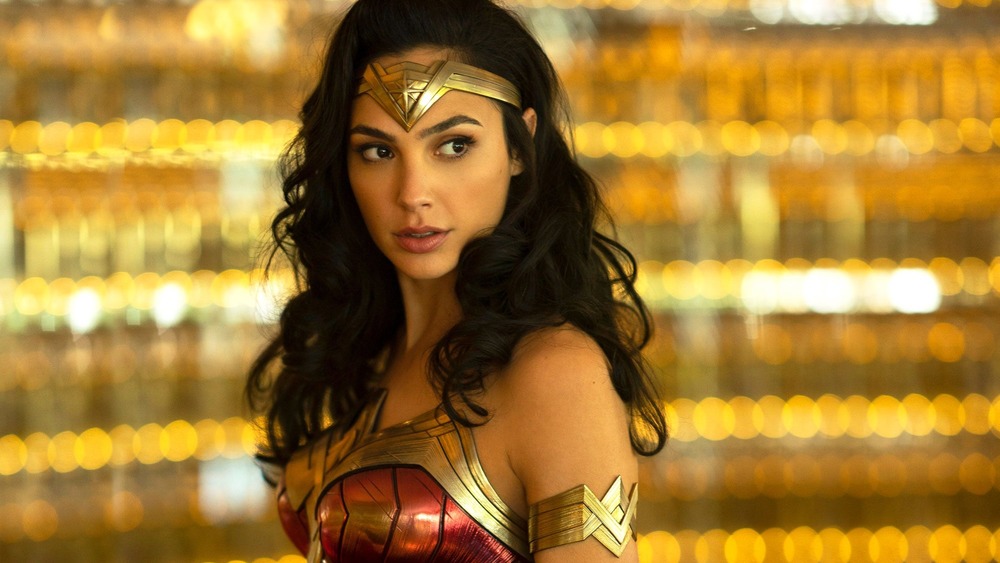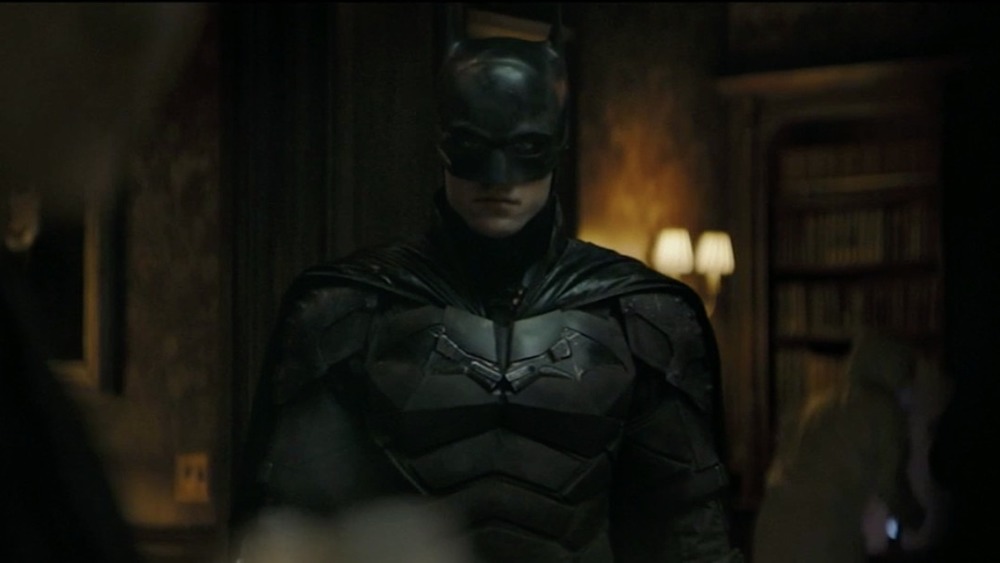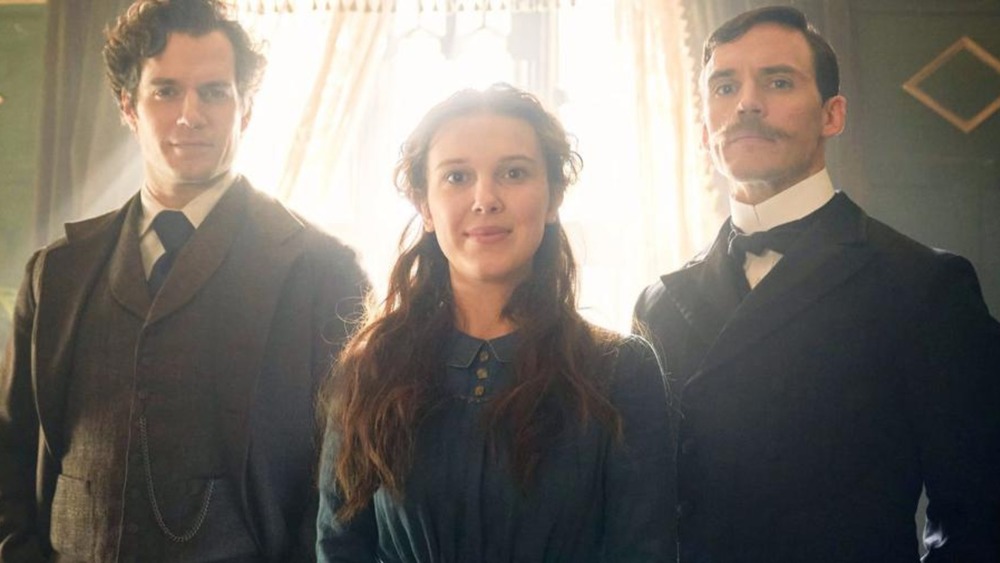How 2020 Changed TV And Movies Forever
New Year's Eve is a magical time, full of excitement and anticipation for a fresh calendar year to begin and the old one to be left behind in the annals of history. As the world sat and watched the countdown clock on December 31, 2019, awaiting the beginning of a brand new decade, little did anyone know that they were on the brink of living out a future high school history textbook. Between the COVID-19 outbreak that's putting the Earth at a standstill, the deaths of many beloved pop culture figures, ravaging wildfires across the Western United States, and arguably the most polarizing U.S. presidential election in ages, no facet of life has gone unscathed in 2020.
This ripple effect is especially prevalent when looking at the entertainment industry. Many liken the business to a giant, unstoppable machine that chews up new talent and trends and spits them out as its sees fit, all while churning out movies and shows one after another in the pursuit of bigger profit margins. This is the way things have been for decades, but 2020's endless curveballs jammed up the gears and left the brass at the top of the industry food chain scrambling.
It's fair to assume that the world will feel the repercussions of this Twilight Zone-esque year for the foreseeable future. This is how 2020 changed film and television forever.
Movie theaters are on their last legs
Over its decades as a cultural staple, the movie theater has withstood the test of time as many people's ideal viewing experience. However, sitting shoulder-to-shoulder with total strangers for roughly two hours at a time isn't exactly an experience catered to a public health crisis. As a result, theaters have been closed down for the better part of the year, with only a few flicks trickling out before everything closed back in the spring of 2020. It's becoming increasingly obvious that change is in the air, and cinemas could very well go the way of the dinosaur.
Speaking to CNN Business, Jeff Bock, a senior analyst from the Exhibitor Relations research firm, gave his thoughts on the state of the megaplex in 2020. "This is the worst-case scenario for theaters," he said, adding that "the virus is simply an antagonist that cannot be overcome by buzzwords, super-powered reviews, or marketing prowess." He finally gave his incredibly bleak prognosis, predicting that "the number of movie theaters that will close on a permanent basis will be directly proportional to how long it takes the U.S. to stomp out the virus."
The gamble of blockbuster releasing
2020 is not only giving theater chains an ultimatum, but it's also putting film studios in quite an awkward position as far as distribution goes. The cinema is a vital component to gaining as much exposure as possible for studios' latest projects, and, in turn, maximize their box office gross. In fact, the success of a feature correlates directly to ticket sales, in most instances, highlighting the value of this metric. Simply put, blockbusters need theaters, and without them, those churning out must-see movies are grasping at straws to figure out what to do with those they've completed.
As of right now, studios have two options when it comes to their flagship films: play the waiting game and delay them so highly-anticipated titles like Wonder Woman 1984 and Black Widow see a proper premiere, or take the chance of sticking them on streaming at a premium price point. As evidenced by the live-action Mulan's disappointing release, video on demand isn't a viable route just yet from an economic standpoint, and pushing premieres into the future comes at the risk of not knowing when the pandemic will end. To quote David Sims of The Atlantic, "The simple fact is that no major studio has been nimble enough to get around the pandemic's biggest obstacles."
With so many movies having been delayed in 2020, a domino effect has ensued, with many films slated for 2021 being pushed to 2022 and beyond to make room for what was supposed to hit theaters this year. It's likely that when theaters reopen — likely to less financial profit and diminished turnout as compared to the pre-pandemic figures — moviegoers will continue feeling the effects of a shuffled-around release slate for years to come. Getting back to square one, where all the films delayed due to COVID-19 have finally been released, will take quite a long time. And, as mentioned, some of them might not even hit the silver screen at all.
Lights, camera, social distance
Putting a film or television show into the hands of paying customers is difficult enough these days, but 2020's myriad of troubles made producing it more tricky than usual. The implementation of widespread quarantines and lockdowns resulted in shooting schedules flying out the window across the board. From the now-canceled fourth season of Netflix's GLOW to Matt Reeves' The Batman, any project was susceptible — but with time to come up with a game plan, productions are slowly but surely picking up steam once again.
Even as film and TV sets start to get rolling, the guidelines that they'll have to follow for the time being are strict to ensure the health and safety of the cast and crew. Scenes with large crowds aren't safe, on-location filming is limited in some areas, and on-screen physical romance is highly discouraged for sanitary reasons, limiting potential candidates solely to those who are an item in real life (via The Washington Post).
It's plain to see that a lot of the media coming out of this rather uncertain atmosphere will look nothing like its predecessors in terms of content, but this is arguably the safest way of doing business outside of sending everyone home until further notice. Not to mention, it's unlikely the after-effects of this era will clear up so quickly, as these regulations will likely linger for a while after the pandemic is declared over and far beyond the reach of 2020. There's a chance that the on-set atmosphere will never be the same even in a post-coronavirus era, with actors, directors, and crew members practicing moderate social distancing and taking extra precautions to ensure not even the common cold is spread amongst the production team.
Streaming cements itself as king
With content reaching completion at a sluggish pace and movie theaters unprepared to bring these exciting stories to the forefront, streaming services have filled the void in any way they can. Given they can accommodate both TV shows and films — and large amounts of them — the likes of Netflix, Disney+, Hulu, and more have solidified their place as many people's one-stop show for their media fix. Even though they've been on the rise as the dominant entertainment medium, the events of 2020 have greatly accelerated their ascent to the top.
As reported by BBC News, adults spend, on average, six hours and 25 minutes of their day eyeing their devices. In 2020, the average time spent on streaming services has doubled — reaching a staggering hour and 11 minutes daily. According to a Netflix representative, with the initial shock of the pandemic wearing off, subscriber numbers are beginning to level off, but that doesn't mean streaming's popularity is decreasing. If anything, it's entirely likely that the medium will only continue to evolve beyond 2020.
This year will stand as a landmark moment in the history of media, irreversibly changing how TV and movies are made, distributed, and enjoyed by the interested masses.
